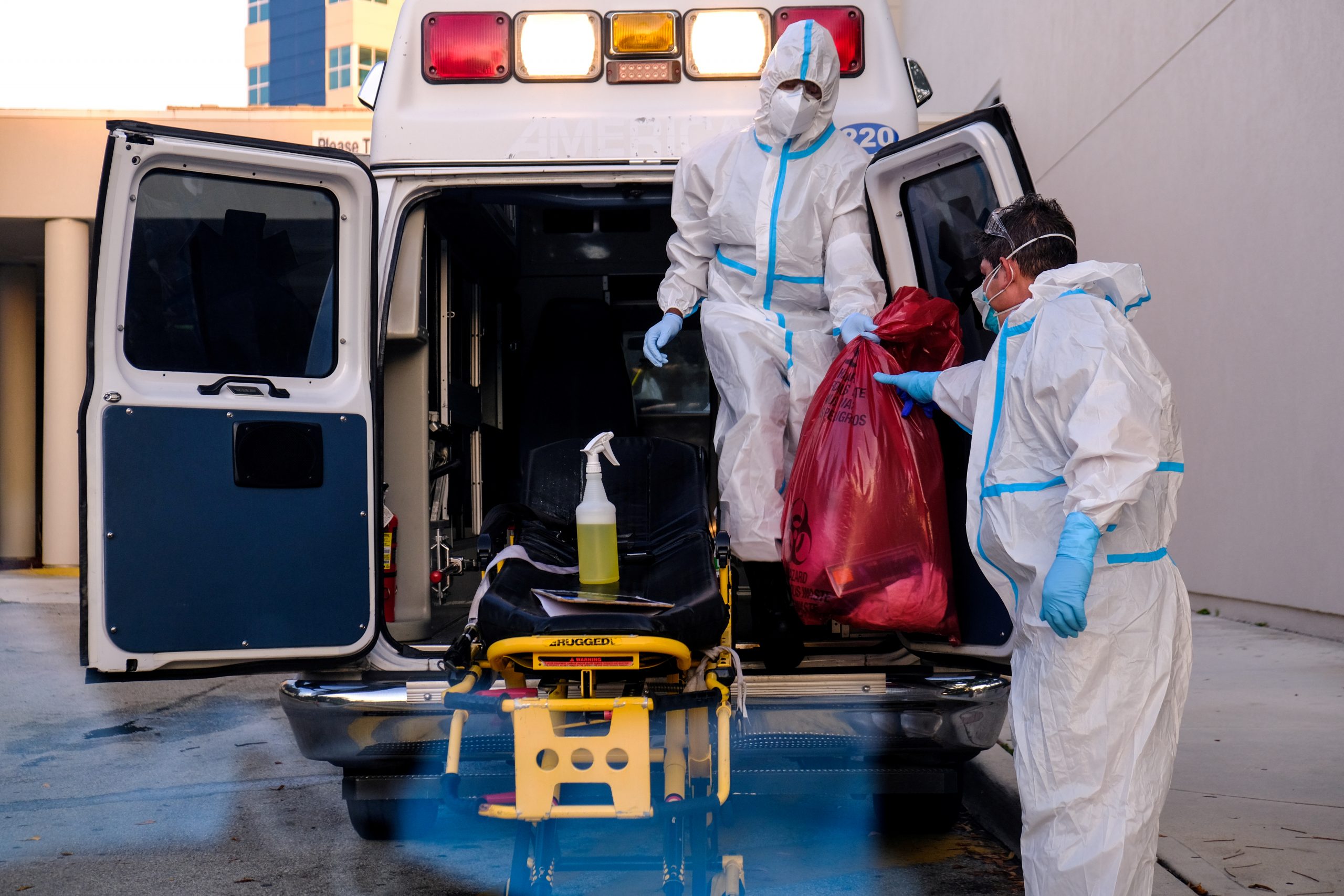Alabama, Florida and North Carolina reported record daily increases in deaths from COVID-19 on Tuesday, grim new milestones that mark a second wave of infections surging across much of the United States.
Florida, which has become an epicenter of the new outbreak, reported 133 new COVID-19 fatalities on Tuesday, raising the state’s death toll to more than 4,500.
“We must all continue to do our part to protect Florida’s most vulnerable and avoid the 3 Cs: closed spaces, crowded places and close-contact settings,” Governor Ron DeSantis wrote on Twitter. “Safeguarding the elderly and those with underlying health conditions will continue to be our top priority.”
Mandi Hawke, who runs a small children’s book company from her home in Broward County near Fort Lauderdale, said she recently made her first trip to the local mall in months and was “horrified” by what she saw.
“Almost no one was wearing masks. I walked past an ale house and everyone was jammed in right next to each other, laughing and joking, having a good time but no masks,” said Hawke, 38. “As bad as things are in south Florida, I feel they’re only going to get worse. We are not getting a grip on this.”
Alabama reported a record spike of 40 deaths on Tuesday and North Carolina an increase of 35, bringing each state’s total to over 1,100.
The number of new U.S. cases reported daily began rising about six weeks ago, driven by increases in southern and western states. Texas saw a record 10,745 new cases on Tuesday.
SCHOOLS AT CENTER OF DEBATE
With more than 3.3 million cases, the United States has one of the highest rates of cases per capita in the world. With more than 135,000 deaths, it ranks seventh in fatalities per capita among the 20 countries with the most cases.
Deaths have begun rising for the first time since mid-April when comparing the weekly change in fatalities, according to a Reuters analysis.
U.S. Vice President Mike Pence on Tuesday visited Louisiana, which reported nearly 13,000 new cases last week.
The state’s attorney general, Jeff Landry, canceled a meeting with Pence after testing positive for the coronavirus. Landry said he had no symptoms and was taking medication prescribed by his doctor.
Against the backdrop of rising cases and deaths, many U.S. school districts have been confronted with a difficult choice of resuming classes or using only online teaching, which many parents have called ineffective and burdensome.
Both Florida and New York state have said students will be allowed to return to school. New York is one of a handful of states where cases continue to fall and positive test rates are about 1% – although it has seen by far the greatest number of deaths overall, at more than 32,000.
North Carolina’s governor on Tuesday ordered schools to reopen if safety measures can be met but said districts can opt for online learning only.
California’s two largest school districts, Los Angeles and San Diego, have said that students will be kept home for the term beginning in August.
Districts refusing to allow students to return are at odds with U.S. President Donald Trump, who has said he may withhold federal funds or remove tax-exempt status. Most schools are financed largely by state and local taxes.
Trump’s campaign views the reopening of classrooms, enabling parents to get back to work, as a key to economic recovery and a boost to his re-election chances on Nov. 3.
The nation’s 98,000 public schools are a cornerstone of the economy, providing childcare for working parents, employing 8 million workers prior to the pandemic, and preparing some 50 million students to join the U.S. workforce.
(Reporting by Maria Caspani and Gabriella Borter in New York, David Lawder in Washington, Rich McKay in Atlanta and Dan Whitcomb in Los Angeles; Writing by Lisa Shumaker and Dan Whitcomb; Editing by Howard Goller, Alistair Bell and Rosalba O’Brien)

























 Continue with Google
Continue with Google